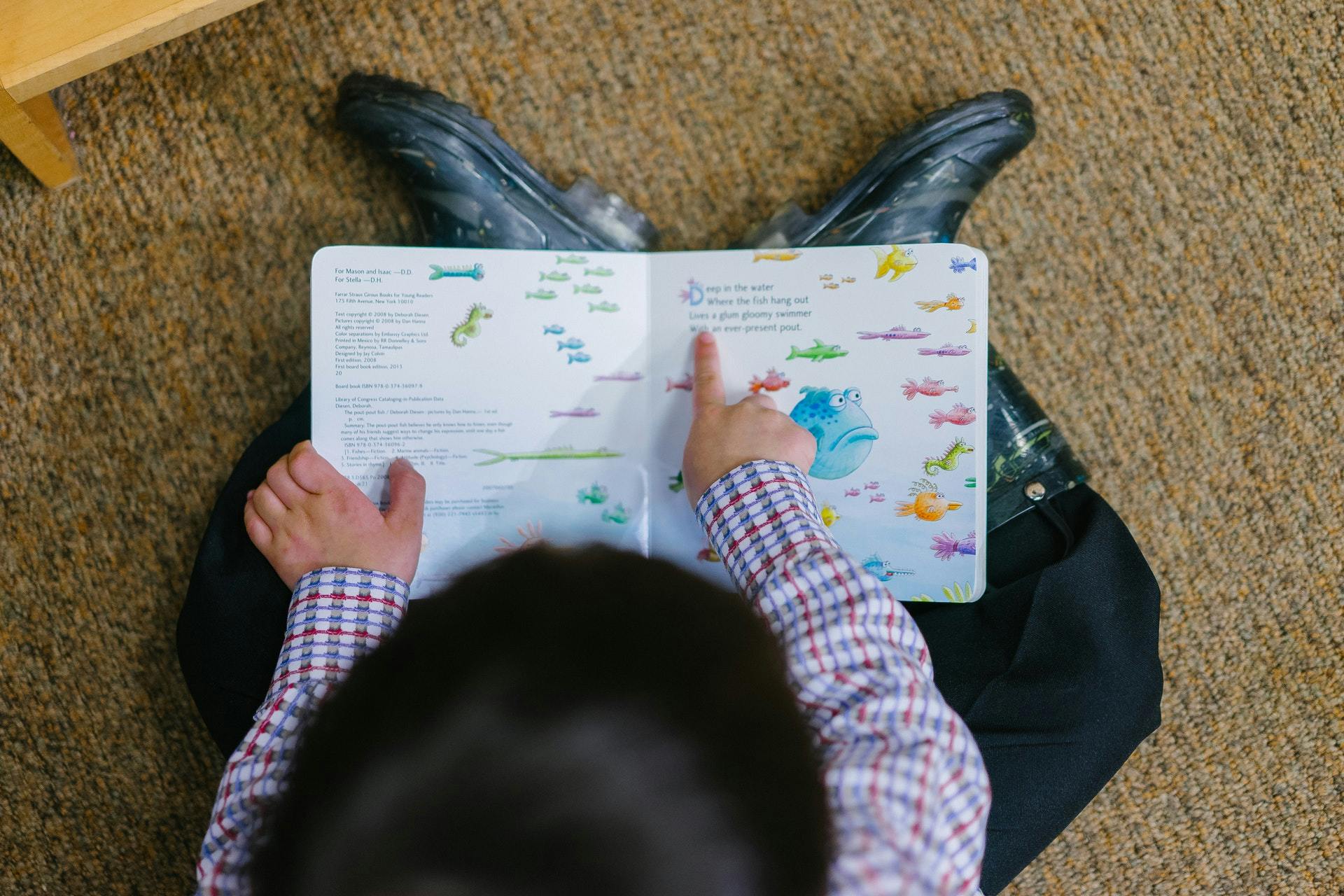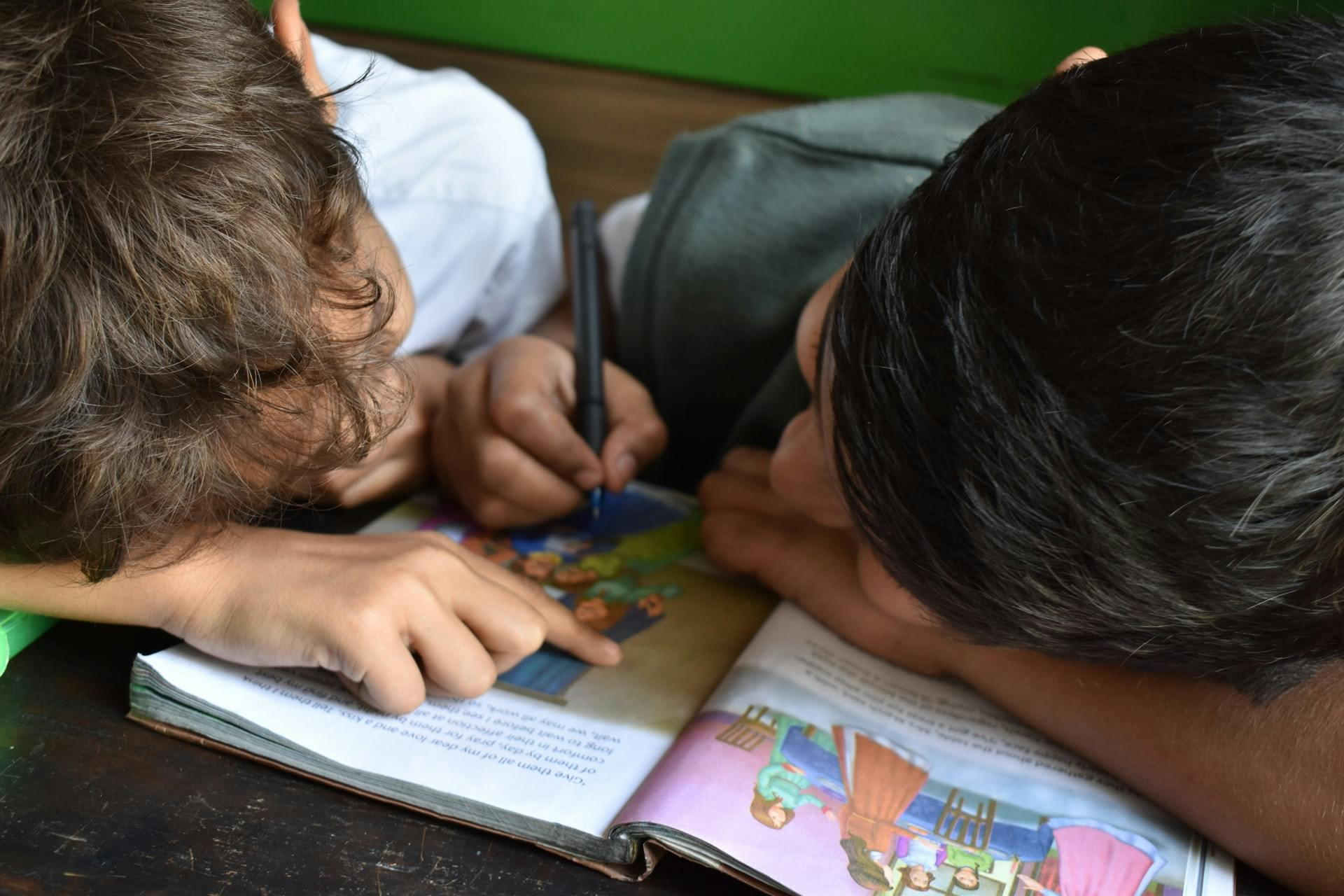11 Proven Tips to Improve Reading Comprehension Skills for Students
All Posts
Written by Maria Kampen
Reviewed by Meredith Melvin, B.Ed.
Category
- Teaching Activities
- Prodigy English
Contents
Cookbooks, social media, instruction manuals — no matter where you look, we live our lives surrounded by words. That’s why reading comprehension is one of the most valuable skills a student can master.
But it’s not automatic. Reading comprehension needs to be taught in the classroom to have a lasting impact, whether you’re teaching kindergarten or high school English.
Many students struggle with reading comprehension and understanding for a variety of reasons:
- They prefer a different learning style
- They’re not interested in reading or writing
- They don’t have the necessary prior knowledge to understand the text
- They have trouble focusing on one word at a time and skip important ideas
- They’re working with a learning need like dyslexia that makes understanding written materials difficult
Every student deserves the chance to build critical comprehension skills. Keep reading for eleven strategies you can use in your classroom to help students love reading!
What is reading comprehension and why is it important?
Reading comprehension is a reader’s ability to understand the explicit and implicit meaning of a text, or piece of writing.
It moves beyond vocabulary knowledge and word recognition to add meaning. When students use reading comprehension skills, they’re turning words into thoughts and ideas.
Reading is one of the most important ways students and adults learn new information. As one study in Policy Insights from the Behavioral and Brain Sciences states: "Reading comprehension is one of the most complex cognitive activities in which humans engage, making it difficult to teach, measure, and research."
Reading comprehension can also help struggling readers build enjoyment of reading and participate more fully in lessons.
And it’s not just for the classroom, either — reading comprehension has real-life applications for readers of all ages. It can:
- Equip readers to make good day-to-day decisions with available information
- Give readers the ability to think critically about what they read online and in the news
- Help readers decipher meaning in recipes, directions or other step-by-step instructions
- Help students move past word recognition into understanding and remembering the text
Improving reading comprehension can help your students become successful readers in and out of the classroom for the rest of their lives.
Two core components of comprehension

The two main components of reading comprehension are vocabulary knowledge and text comprehension. Both of these skills combine to help students get the most out of a text.
Vocabulary knowledge
Vocabulary knowledge is where reading comprehension starts. Students with good vocabulary strategies understand what words mean and have the background knowledge to understand a given text.
It also includes strategies for using context clues to determine the meaning of unfamiliar words. The reading comprehension process is over before it begins if students don’t have solid vocabulary knowledge or the ability to learn new words.
Text comprehension
Text comprehension is a big-picture look at what, exactly, a text means. It helps students interact with a text to understand what’s being said and what they need to learn from it.
When students have good text comprehension skills, they can answer questions about what the author is saying, summarize the passage and connect information between texts or prior knowledge.
In short, it helps them move beyond literal comprehension and into higher levels of thinking.
11 Ways to improve reading comprehension skills

Whether you’re teaching high school or elementary school, it’s never too late to use reading comprehension strategies to improve understanding, boost retention and make connections. Every student is different, so adjust your teaching methods accordingly!
Some of the most effective reading comprehension strategies include:
1. Build on existing knowledge
One of the biggest barriers to reading comprehension is a lack of background knowledge.
If you’re reading a text about astronomy, for example, ask students to record or explain what they already know about the solar system. For easy insights, have students answer quick questions or fill out a KWL (Know, Want to Know, Learned) chart and share the results.
Or read non-fiction and fiction books that cover the same or overlapping topic. For example, a non-fiction book about pigs and a picture book that includes pigs as characters. Teachers can reference the facts from the non-fiction book to discuss what is fact versus fiction.
Make sure all students understand key terms and ideas before you read the text, so everyone starts on the same page (literally). This helps students draw inferences and make connections between the text and things they already know, levelling the playing field when it comes to prior knowledge.
2. Identify and summarize key ideas
After students read, summarizing a text can help them pull out main points and absorb more information.
As you introduce summarization, guide students through with leading questions and a specific structure — length, key points, etc. Use the “I do, we do, you do” format to model good summarization techniques.
As you model the practice, teach students how to:
- Separate facts from opinions
- Find key ideas amid extra information
- Identify important words and phrases
- Look up vocabulary they don’t understand
Teaching students how to do this consciously helps train their brains to start summarizing automatically, leading to better reading comprehension overall.
3. Use online resources
Thanks to the internet, reading doesn't just happen IRL — it's online, too! There are lots of resources you can use in your classroom to engage kids with different interests as they practice their reading comprehension.
Prodigy English is a brand-new adventure that introduces kids to a world filled with adventures, wishes and more ways to love reading.
Its game-based platform encourages students to answer curriculum-aligned reading and language questions to get more energy. Once players are energized, they can gather resources from an ever-growing world, craft items, earn coins and build their very own village.
As they play, you'll be able to track their progress and achievement. Sign up for a free teacher account today!
4. Use visual aids

To help students build a picture in their minds of what they’re reading, use visual aids and visualization techniques.
Start by reading aloud and asking students to try and picture what’s happening in their heads. After, use writing prompts like:
- What colors did you see the most?
- What do you think the setting looked like?
- How would you describe the main character?
- What sounds do you think you would hear in the world of the story?
Have students draw out a scene, character or story for even more understanding. They can make a family tree of the characters or fun notes to help them remember the key points in the story!
Anchor charts, word walls or picture books can also help reinforce key concepts for your students. When they’re able to visualize the story or information they’re reading, they’re more likely to retain key information.
5. Develop vocabulary skills
Vocabulary is an important part of understanding a text and is vital for reading ease and fluency. Vocabulary teaching strategies can help students build the tools to understand new words on their own.
To help students learn and remember new words, try:
- Making a word wall in your classroom
- Pairing new words with physical actions
- Creating graphic organizers that help relate known words to new ones
Read-aloud strategies can also help you model the process of learning new words for students. Show them how to use context clues to find meaning, and have them make a vocabulary list of all the new words they know or want to learn.
6. Implement thinking strategies
To encourage students to engage critically with a text, ask questions about:
- Where they can spot bias in the material
- Why the author chose a particular genre or style
- What they think happened before or after the story
- Why characters responded to situations the way they did
These questions get students thinking about the deeper meaning in a text and help them use critical thinking skills as they look for key points. Encourage students to ask clarifying questions when they don’t know what the text is saying, or build mind maps to draw connections between ideas and prior knowledge.
7. Create question and answer scenarios

Questioning students on different aspects of the text helps them examine it with fresh eyes and find new ways of interpreting it.
Use questions that challenge students to find the answers:
- In several different parts of the text
- On their own, using background knowledge
- In their own opinions and responses to the text
Ask students questions to clarify meaning, help them understand characters better, make predictions or help them understand the author’s intent.
Whether you’re answering these questions in a group or individually, they’ll help students make a habit of asking questions and using critical thinking skills. After all, the magic happens when students start thinking beyond the page!
8. Encourage reciprocal teaching
Reciprocal teaching gives students four strategies for reading comprehension and uses specific techniques to get them involved in interrogating a text.
Using the “I do, we do, you do” method, follow the four building blocks of reciprocal teaching:
- Predicting — Asking questions about what’s going to happen in the story and after it’s done.
- Questioning — Asking questions about the who, what, when, where, how and why of a story.
- Clarifying — Helping students recognize their confusion, identify what’s confusing them and taking steps towards understanding.
- Summarizing — Condensing a reading to its most important facts and ideas.
Check out four reciprocal teaching strategies to use in your classroom.
9. Use summarizing techniques
Although it might seem tedious for students at first, summarizing techniques help them learn how to find and bring together key ideas. It trains them to automatically synthesize information as they read, and can benefit learners of all levels.
When students first encounter a text, have them write a summary and encourage them to refine it until it only includes the essential information. Ask clarifying questions to guide their writing, including:
- What is the main idea of this passage?
- What details support the main idea in the story?
- What unnecessary information did the author include?
This helps them see how parts of a story are connected and emphasizes the importance of providing textual support to their argument and summaries.
10. Ask students to make predictions

Predictions happen when students use the evidence from the beginning of a text to guess:
- What will happen next
- What they think the text will be about
- What details an author will use to support their argument
At the beginning of a reading, have students record their predictions. Once the reading is over, have a discussion about what they got right and what they got wrong. What made them think of their prediction? Did the author follow their expectations, or subvert them?
Model predictions with a think-aloud or give students blank statements that guide their thinking.
Not only does this build reading comprehension, but it encourages students to engage with the material critically and teaches them how to build solid, text-based arguments.
11. Try making inferences
When students make inferences, they’re using the information they know to make a guess about what they don’t.
Instead of just predicting what’s going to happen next, students make inferences about information outside the story — what happened before the story started, what genre the story is or what happens after the story is over.
Like predicting, you can model inferences with read-alouds or guided questioning. Have students write a prequel to the story, or build a character background based on textual evidence.
Inferences help students draw conclusions between the text and their prior knowledge about how the world works. Plus, it can help boost their creativity!
How parents can encourage reading comprehension at home

Reading doesn’t stop when children leave the classroom. Parents, you have an important opportunity to support reading comprehension at home, too.
1. Read aloud with your children
Reading with your child has lots of benefits — it helps you bond, it builds their imagination and it’s fun!
As you read, discuss topics and ask your child guiding questions about what’s happening. What do they think will happen next? Which character would they most like to be friends with? What would they do if they were the main character?
Not only do these questions make reading fun, it can help strengthen their reading comprehension skills.
2. Buy or borrow books at the right reading level
Whether it’s your local bookstore or library branch, there are always books available at your child’s reading level.
If your child is reading books that are too easy, they’ll get bored. But if books are too hard, they’ll get discouraged. Talk to your child’s teacher about how to find books in their sweet spot.
Host a book swap with neighbors or friends to get access to new titles, or look in the library for books that relate to your child’s unique interests.
3. Discuss what your child is reading

As a parent, you have a wonderful opportunity to hold low-pressure, friendly conversations with your child about what they’re reading — no pop quiz required.
Ask your child what their favorite book is, or what they like reading at home or at school. After they’re done reading, ask them questions about what happened in their book, or what they think will happen next, to build an organic love of reading.
4. Check out online reading programs
Online reading apps can help kids engage with books and reading in new, exciting ways! For a digital literary experience, check out:
- Epic — A free online library of digital books you can browse and read with your child.
- Headsprout — An adaptive online learning resource for students in kindergarten to fifth grade.
- Audible — A library of audiobooks and podcasts for kids who prefer to listen rather than look at words.
- Sora — An Overdrive-based app where you can download books and audiobooks from your library for free.
- Prodigy English — A whole new way for kids to develop reading and language skills, with free educational content for 1st to 6th grade created by teachers.
5. Try game-based learning
If your child doesn’t want to sit still long enough to read a book, game-based learning can help them master important concepts and get the ants out of their pants.
Charades, telephone, Pictionary and Scattergories are all fun games that connect meaning with words, help boost your child’s background knowledge and make learning words fun.
Try some in your house to see which your child likes best.
And, if they're into educational apps, explore Prodigy English — a digital game-based learning platform! As students play, questions cover important skills like reading, rhyming, phonetics and spelling.
6. Ask their teacher
Your child’s teacher should be your first stop for any questions about your child’s reading comprehension or areas for improvement.
Whether it’s part of a parent-teacher conference or just a quick catch-up after school, they’ll be able to give you valuable advice about how to best help your child love reading. Use their advice to connect the books you read at home and the games you play with what your child is working on in class!
Reinforce with continual learning and encouragement
Reading comprehension doesn’t just happen all at once — it’s a lifelong process that students build on as they grow.
In each grade, encourage students to engage more deeply with what they’re reading and ask critical questions. As students build reading comprehension skills, they’ll have an opportunity to find joy and meaning in their reading.
Want more ways to build reading comprehension? Try Prodigy English!
In this all-new adventure, students can explore and create a world of their very own as they meet new characters, earn coins and build a home. Create a free teacher account today to get started.



